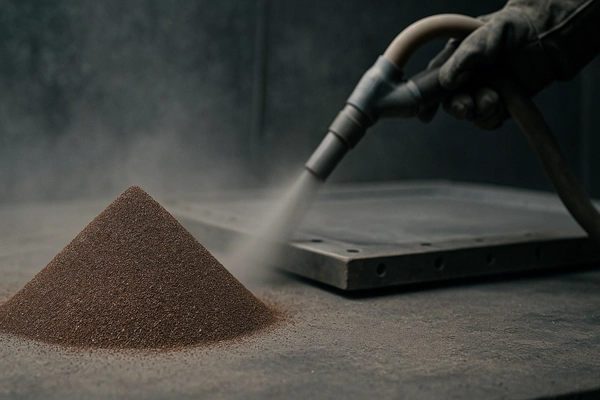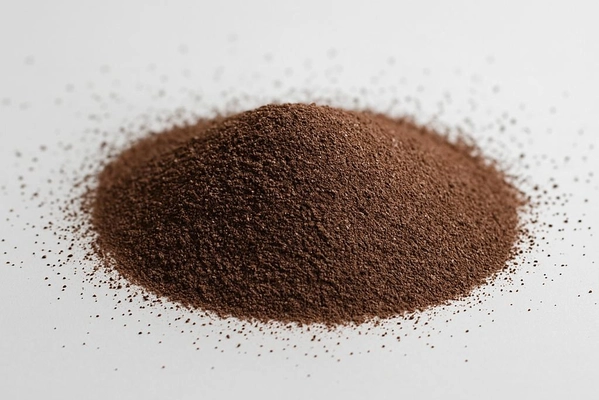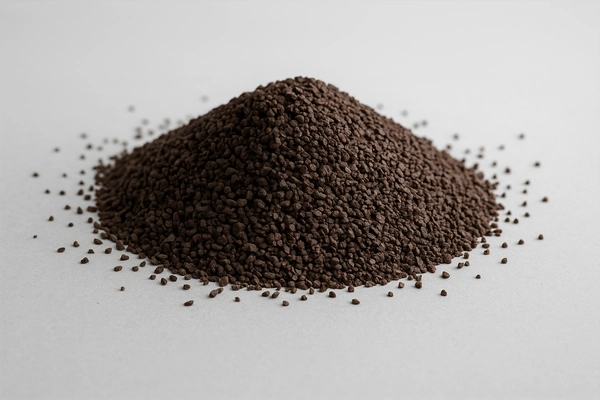Quick answer: For wood, use flap discs (Type 27 flat / Type 29 conical) with FEPA P60–P120 for shaping → finishing; keep surface speed ≤ the disc rating (typically up to 80 m/s) and verify max RPM on label.
Introduction to Grinder Wheels for Wood
Grinder wheels designed for wood are essential tools in woodworking and manufacturing, offering precision and efficiency for tasks like sanding, shaping, and finishing. These wheels come in various types, such as flap discs, sanding pads, and abrasive wheels, tailored specifically for wood surfaces. In B2B foreign trade, selecting the right grinder wheel can enhance productivity and quality, making it a key investment for suppliers and manufacturers. This guide explores the best options, focusing on features, specifications, and real-world applications to help you make informed decisions.
Key Features of Grinder Wheels for Wood
Grinder wheels for wood boast advanced features that ensure durability and performance. High-quality materials like aluminum oxide (Al2O3), zirconia alumina (ZA), or ceramic alumina provide excellent abrasion resistance, allowing for smooth operation on hardwoods and softwoods alike. Many models include a flexible design that prevents gouging, making them ideal for intricate woodworking projects.
Another standout feature is the grit variation, ranging from coarse (for rapid material removal) to fine (for polishing). This adaptability suits diverse needs in industrial settings. Additionally, anti-clogging (stearate) coatings on some wheels reduce buildup, extending their lifespan and maintaining consistent results during prolonged use.
Ergonomic designs, such as balanced weight distribution, minimize vibration and user fatigue, which is crucial for high-volume production environments. Safety elements, like reinforced hubs, ensure the wheel stays intact under high speeds, complying with international safety standards.
- Material composition: Ceramic/ZA/Alumina; resin-bonded or coated abrasive constructions.
- Grit sizes: FEPA P40–P220 for coated abrasives; (bonded: ANSI/FEPA macro grits).
- Size options: 4–7 in (100–180 mm) typical; Type 27 (flat) / Type 29 (conical) flap discs.
- Backing types: Cloth, fiberglass, or poly-cotton; heat dissipation + flexibility.
- Special coatings: Stearate / hydrophobic layers for humid environments; anti-loading topcoats.
Specifications of Top Grinder Wheels for Wood
Understanding specifications is vital for B2B buyers to match products to their machinery. Most wood-focused flap discs and fiber discs specify a maximum surface speed up to 80 m/s and list a max RPM; always choose the grinder speed below the disc’s rating.
| Parameter | Typical Range / Note | Method / Standard | B2B Considerations |
|---|---|---|---|
| Abrasive type | Alumina / Zirconia alumina / Ceramic alumina | Material SDS / Spec sheet | ZA/ceramic for hardwood/heavy stock; AO for cost efficiency |
| Grit (coated) | FEPA P40–P220 | ISO 6344 / FEPA | P40–P60 shaping; P80–P120 blending; P150+ finishing |
| Diameter | 115 / 125 / 180 mm (4.5 / 5 / 7 in) | ISO 603 (bonded dims) | Match guards & shrouds; larger disc, lower RPM |
| Arbor / thread | 5/8-11 (US), M14 (EU/Asia) | OEM spec | Ensure adapter/locknut compatibility |
| Max RPM | e.g., 11,000–13,300 RPM | Label (EN 13743 / ANSI B7.x) | Never exceed; verify grinder no-load speed |
| Surface speed | Up to 80 m/s (typ.) | Disc marking / standard | Use formula below to check safety margin |
| Coatings | Anti-clog (stearate), water-repellent | Spec sheet | Essential for resinous woods & humid shops |
| Cert / QA | ISO 9001 (factory QA) | Cert copy | Tender/procurement requirement |
Surface speed check: m/s = π × D(m) × RPM / 60. Example (125 mm at 11,000 RPM): π × 0.125 × 11000 / 60 ≈ 72 m/s (below typical 80 m/s rating).
- Arbor size: 5/8-11 or M14 for secure fitting on angle grinders.
- Grit rating: From 24–120 (coarse→fine), based on application needs.
- Material: Aluminum oxide for cost-effectiveness or zirconia/ceramic for harder woods & heavy stock.
- Dimensions: 4–7 inches in diameter; typical thickness aligns with product type.
- Load speed: Up to ~13,300 RPM, depending on the wheel’s rating.
Selection & Sizing Guide
- Define task: stock removal / shaping curves / surface prep / finishing.
- Match wheel type: Type 29 flap disc for aggressive shaping; Type 27 for flat blending; fiber disc for large flats; flap wheel (radial) for contours.
- Pick grit: P40–P60 (hogging), P80–P120 (blend), P150–P220 (pre-finish).
- Check size & RPM: Choose 115–125 mm for handheld agility; verify grinder no-load RPM ≤ disc max.
- Control dust: Use extraction & low-dust products; fit proper PPE.
| Use case | Wood | Wheel type | Grit (FEPA) | Notes |
|---|---|---|---|---|
| Rapid stock removal | Hardwood (oak, maple) | Flap disc Type 29 (ZA/ceramic) | P40–P60 | High removal; keep passes light to avoid gouge |
| Shaping curves / bowls | Softwood / hardwood | Flap wheel (radial) / flexible flap disc | P60–P80 | Follows contours; lighter pressure |
| Surface prep before finishing | All | Type 27 flap / fiber disc | P80–P120 | Uniform scratch pattern for stain/paint |
| Finish blending | Visible faces | Type 27 finishing flap | P150–P220 | Minimal swirl; prep for orbital sander |
| Paint/varnish removal | Old coatings | Fiber disc with anti-clog coat | P60–P80 | Lower heat; avoid scorching |
Benefits of Using Grinder Wheels for Wood
Grinder wheels for wood deliver numerous benefits that boost operational efficiency in B2B settings. They enable faster material removal compared to traditional sandpaper, reducing project timelines and labor costs. This speed is particularly advantageous in large-scale manufacturing, where time savings translate to higher profits.
These wheels also produce a smoother finish, minimizing the need for secondary polishing and ensuring high-quality end products. Their versatility allows for use on various wood types, from oak to pine, without frequent tool changes. Additionally, the durability of modern wheels means less frequent replacements, lowering overall expenses for businesses.
From an environmental perspective, many eco-friendly options generate less dust and waste, aligning with sustainable practices in global trade. Improved user safety features, such as reduced kickback, enhance workplace conditions, potentially cutting down on accident-related downtime.
Applications of Grinder Wheels for Wood in Various Industries
In woodworking industries, grinder wheels are indispensable for tasks like edge profiling and surface preparation in furniture manufacturing. They excel in removing old finishes or shaping wooden components, providing a clean base for painting or staining. B2B suppliers often use them in cabinetry production for precise detailing.
For construction, these wheels help in preparing wooden beams and frames, ensuring a flawless fit in building assemblies. In the crafting sector, artisans rely on them for custom designs, such as carving decorative elements on doors or panels. Their application extends to restoration projects, where they restore antique furniture without damaging the original structure.
In export-oriented businesses, grinder wheels facilitate the creation of high-quality wooden exports, like flooring or paneling, meeting international standards. They are also used in boat building for smoothing hulls, demonstrating their adaptability across marine and outdoor applications.
Advantages of Grinder Wheels for Wood Over Alternatives
| Tool/Option | Pros | Cons | Best for |
|---|---|---|---|
| Flap disc (Type 27/29) | Fast, controllable, wide grit range | Edge can gouge if too steep | General shaping & blending |
| Fiber disc + backing pad | Low cost, large flat areas | Less forgiving on contours | Decking, panels, doors |
| Radial flap wheel | Follows curves & profiles | Lower removal rate | Bowls, moldings, carvings |
| Belt sander | Uniform finish on flats | Not for tight spaces | Benchtop prep |
| Random orbital | Swirl-free finishing | Slow stock removal | Final prep before coat |
Safety Standards and Compliance
- ANSI B7.1 — Safety requirements for the use/care of abrasive wheels (bonded/coated systems context).
- EN 13743 — Safety requirements for coated abrasive products (e.g., flap/fiber discs).
- OSHA 29 CFR 1910.215 / 1910.242/243 — Abrasive wheel machinery; hand-held power tools.
- ISO 6344 — Grain size of coated abrasives(FEPA P-grades)。
- ISO 603 — Dimensions for bonded abrasive products(size designation on discs)。
Safety notes: Verify disc max RPM and surface speed on the label; use guards, eye/face/respiratory protection; ensure dust extraction for wood dust control. Avoid chainsaw-tooth style angle-grinder discs; many manufacturers prohibit them due to kickback hazard.
Frequently Asked Questions
What types of grinder wheels are best for softwoods like pine?
Flap discs with medium grit (P80–P120) prevent over-sanding and leave a smooth finish without tearing the grain.
How do I select the right grit size for my project?
Start coarse (P40–P60) for removal, then move to P80–P120 for blending, and P150–P220 for pre-finish.
Are grinder wheels for wood safe for high-speed applications?
Yes—when the grinder’s no-load RPM is below the disc’s rated max and guards/PPE are used. Many discs are rated up to 80 m/s.
What maintenance is required?
Clean loading, inspect for damage, and store dry/flat. Replace when edge is glazed, torn, or hub is compromised.
Can these wheels be used on other materials?
Some can handle light metal or plastics; always check compatibility to avoid contamination or melting.
How do costs compare to other sanding tools?
Higher unit price than sheets, but longer life and faster throughput typically reduce total cost per job.
What should I consider for export?
Require factory QA (e.g., ISO 9001), clear labeling (P-grit, max RPM), and conformity to destination safety norms (e.g., EN 13743).
Do grinder wheels work on curved or irregular surfaces?
Yes—use radial flap wheels or flexible flap discs for contours and bowls.
How long do they last?
Typically several projects(≈10–20 hours)depending on wood species, pressure, and cooling/dust control.
Are there eco-friendly options?
Look for low-dust formulations and recycled-content backings; pair with high-efficiency dust extraction.
Conclusion
In summary, grinder wheels for wood represent a versatile and efficient solution for B2B professionals in foreign trade, combining robust features, precise specifications, and clear benefits to enhance woodworking processes. By understanding their applications and advantages, businesses can outperform alternatives and achieve superior results. Investing in the right wheel not only boosts productivity but also ensures long-term value, making it a smart choice for global manufacturers and suppliers.
References
- ANSI B7.1 — Safety Requirements for the Use, Care and Protection of Abrasive Wheels.
- EN 13743 — Safety requirements for coated abrasive products.
- OSHA 29 CFR 1910.215 / 1910.242 / 1910.243 — Abrasive wheel machinery & hand tools.
- ISO 6344 — Coated abrasives — Grain size analysis (FEPA P-grades).
- ISO 603 — Bonded abrasive products — Dimensions.


